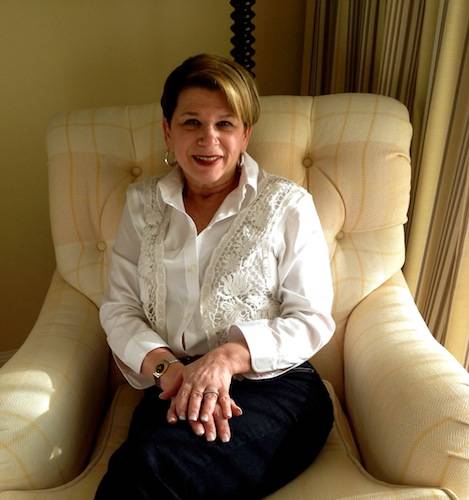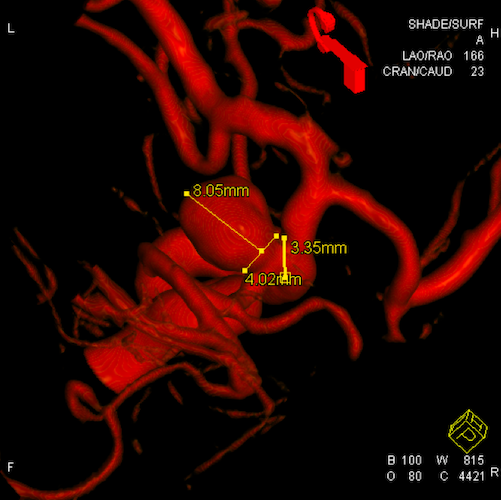
Elyse Schifrien
Last September, in the Bergen County Special Services School District, a rumor spread that their well-loved social worker and union co-president, Elyse Schifrien, had passed away. Elyse was only 58 years old and in good health. She had been married for 35 years, had a grown daughter, and lived a busy and productive life. A lot of people cared for Elyse and news of her death was devastating.
Elyse was, though, very much alive and doing quite well considering she had just survived a giant aneurysm and was recovering from brain surgery.
“People hear ‘aneurysm‘ and they think it is a death sentence,” says Elyse. “My phone was ringing off the hook. It was crazy.”
On a Thursday, two days earlier, Elyse had gone into work not feeling well and after doing some paperwork, she told her coworkers she was going to the emergency room. “I just knew something wasn’t right. I didn’t know if it was my head or my stomach, but I knew I had to have someone look at all-of-me.”
Elyse hadn’t been feeling well for about five weeks by then. She’d had five strange episodes where she was suddenly light headed, nauseous, and vomiting.
That day, it was happening again but she had already missed a few days of work and decided she couldn’t miss any more. Her friends would later tell her that she had looked gray that day. Elyse drove herself to the Valley Hospital in Ridgewood, New Jersey.
Elyse remembers, “That’s when the emergency room doctor came and said, ‘I have good news and bad news. The good news is your blood work is great. The bad news is you have brain aneurysms.’”
An aneurysm is a bulge in a blood vessel that is caused by weakening of the vessel wall. Aneurysms can cause symptoms by pressing on nearby brain structures and they can be life threatening if they burst. They often require surgical treatment.
“When I heard the word ‘aneurysm‘, which never even occurred to me that I would have, I think I really just went into automatic mode at that point,” says Elyse.

View of the posterior communicating aneurysm measuring 8.05 mm at its widest diameter.
Fortunately for her, Dr. Dorothea Altschul, a neurointerventionalist who specializes in endovascular treatment of brain aneurysms, was right around the corner from the hospital and was able to get in to see Elyse within ten minutes.
“I was just lucky enough that she just happened to be there,” says Elyse. “She exudes confidence right away and what’s nice is that it’s confidence and not arrogance. She’s approachable. Approachable, even at the very beginning when she had no idea who I was.”
Dr. Altschul studied the images taken of Elyse’s brain and explained to her that there were two aneurysms; one very large one behind her right eye, and another smaller one behind her forehead, between her eyebrows.*
The larger one, she explained, was dangerous. It was causing her symptoms, could burst at any time, and required surgery right away.
There are two types of surgery performed for unruptured aneurysms; clipping and coiling. Clipping involves a craniotomy (open brain surgery) and the placement of a tiny clip at the base of the aneurysm. Coiling is a minimally invasive treatment where the aneurysm’s blood supply is cut off by filling it with tiny flexible coils. This procedure is usually done through a small incision in the leg to access blood vessels that travel all the way up to the brain.
Dr. Altschul determined that endovascular coiling was the best course of action in this case, and Elyse was admitted to the hospital for the procedure; performed by Dr. Altschul and endovascular surgeon.
The treatment was a success, the large aneurysm was no longer a danger to Elyse. Further, because of the location of the aneurysm, there had been some risk of losing some peripheral vision in her right eye, and when Elyse woke up, her vision was perfectly fine.
Elyse also says that after the surgery she felt she could think more clearly than before, especially while speaking. “I had to ask Dr. Altschul, ‘Did I really have brain surgery?’ and she said, ‘Yes, Elyse, you really did.”
Meanwhile, back in the Bergen County school district, Elyse says,“They made the announcement that I had a brain aneurysm. Someone heard that and decided that I had died. It spread around the entire district that Elyse has passed away. So now my superintendent put out a memo to every single principal and supervisor and secretary to share with everybody, there is a rumor that I have passed away and then he put in bold letters, THIS IS NOT TRUE.”
After surgery, Elyse was able to call her friends and colleagues. “First of all,” she told them. “Rumors of my death have been greatly exaggerated.”

Dr. Dorothea Altschul
Elyse only had to spend a couple of days in the hospital before she was sent home. She took two weeks off and then went back to work. “No one could believe it,” she says.
Elyse takes better care of herself now and says the biggest thing she learned is to “listen to your body.” She likes to pass this pearl along whenever she talks to people about her ordeal.
With a wink, she also tells them that she now has five rules in case of emergency surgery: “If you think you need a manicure–go get one; same thing if you need a pedicure; have a robe for each season; get that haircut, if your wondering; and surround yourself with family and friends.”
Elyse says she is doing well and that she hasn’t had any symptoms since her surgery. She still has the other small aneurysm, but her doctors are keeping a close eye on it.
“I was very lucky. I made it by the skin of my teeth,” says Elyse. “To see me, no one would know that I had emergency brain surgery. I am living proof that there is life after aneurysms.”
———-
*UPDATE (Posted on May 21, 2013)
Elyse had surgery on the second smaller aneurysm and she is doing great! Here is what she said:
The surgery was April 4th and I came home on April 5th. Of course my hair and nails were done and my wonderful family was there. Most importantly, I had the best neurosurgeon, Dr. Altschul who truly has gifted hands. I talk about her often and people are always asking me how to spell her name. This is what I say:
A as in Accomplished
L as in Learned
T as in Tall
S as in Superb
C as in Confident
H as in Humble
U as in Unbelievable
L as in LifeNot only did Dr. Altschul save my life, she preserved the quality of my life. I am forever grateful to her.

